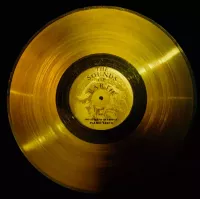Michigan International Speedway, located in Brooklyn, Michigan, is a 2-mile D-shaped oval superspeedway. It is a prominent venue for motorsports, hosting NASCAR, CART, and IndyCar races. The speedway's seating capacity is 56,000. Besides the oval track, the facility also features three road course layouts designed by Stirling Moss. The facility is owned by NASCAR and is currently led by track president Joe Fowler.
March 1966: Lawrence LoPatin Expresses Hopes of Expanding Windsor Raceway
In March 1966, Lawrence LoPatin, treasurer of Windsor Raceway, expressed hopes of expanding the raceway into a resort complex, with the initial phase including a Grand Prix type auto-racing track.
April 1967: Site Revealed to be in Lenawee County
In April 1967, the site for the racetrack was revealed to be in Lenawee County in Cambridge Township.
September 27, 1967: Groundbreaking on Michigan International Speedway
On September 27, 1967, the groundbreaking on Michigan International Speedway (MIS) occurred, with British racing driver Stirling Moss commencing construction.
October 6, 1968: Opening Date Set
The opening date for Michigan International Speedway was set for October 6, 1968, with a 250-mile IndyCar-style race inaugurating the facility, although the date was later pushed back a week.
October 13, 1968: Michigan International Speedway Opens
On October 13, 1968, Michigan International Speedway (MIS) opened as scheduled, with Ronnie Bucknum winning the first ever race at the facility.
October 1968: USAC Inaugural Event
In October 1968, the United States Auto Club (USAC) held its first event at Michigan International Speedway, which was the speedway's inaugural event.
1968: Facility set to open
By September of 1968, local media reported that the now 700-acre, $4.5 million facility was set to open.
1968: Michigan International Speedway Completion
In 1968, Michigan International Speedway was completed, and it ran its first races in October of the same year.
1968: Michigan International Speedway Lacked USAC Event
Michigan International Speedway (MIS) lacked a United States Auto Club (USAC) event after 1968 due to disagreements with USAC over purse money for a USAC race.
1969: Weather Problems
By the end of the 1969 racing season, weather problems during all four major races in the season affected attendance and in turn, the facility's profits.
1969: NASCAR Cup Series Race
In 1969, the first NASCAR Cup Series race at Michigan International Speedway (MIS) was ran on June 15, with Cale Yarborough winning the event.
January 1970: American Raceways, Inc. Merges with STP Corporation
In January 1970, American Raceways, Inc. (ARI) merged with the STP Corporation; by this point, ARI had amassed over $15 million in debt.
July 30, 1970: LoPatin Fired from Position as Chairman of American Raceways, Inc.
On July 30, 1970, Lawrence LoPatin was fired from his position as chairman of American Raceways, Inc. (ARI).
1970: USAC Returns to MIS
In 1970, the United States Auto Club (USAC) returned to Michigan International Speedway after failing to renew the prior year.
January 10, 1971: MIS Financial Problems Resolved
On January 10, 1971, it was reported that Michigan International Speedway's financial problems were resolved after American Raceways, Inc. (ARI) sold its 48% interest of Riverside International Raceway worth $425,000 to avoid an auction.
March 1973: Patrick Agrees to Buy the Facility
By March 1973, Pat Patrick along with two other businessmen agreed to buy out Michigan International Speedway (MIS) for $2.5 million, with the sale effective on June 14.
1973: American Raceways Sold Ownership of the Speedway
In 1973, American Raceways sold ownership of Michigan International Speedway to Roger Penske.
1973: USAC Sanctions Second Event
Starting in 1973, USAC sanctioned a second event at Michigan International Speedway, which took place in the fall.
1977: MIS Track Surface Resurfacing
In 1977, a resurfacing of Michigan International Speedway's (MIS) track surface was announced in August and completed approximately two months later.
1978: CART Takes Over Both Dates
In 1978, Championship Auto Racing Teams (CART) took over both of the USAC racing dates at Michigan International Speedway.
1978: LeFere Resigned
In 1978, LeFere resigned from his position as general manager of Michigan International Speedway, being replaced by Citibank executive Jim Melvin.
November 1979: United Airlines Executive Replaces Melvin
In November 1979, Melvin left soon after to become the president of Championship Auto Racing Teams (CART), being replaced by United Airlines executive Rick Nadeau.
1981: Summer Race Extended to 500 Miles
In 1981, the summer race at Michigan International Speedway was extended to a 500 mi (800 km) race and was sanctioned by CART.
1986: Doll Replaced by Haskett
In 1986, Doll was replaced by Gene Haskett when Doll left to serve as the general manager of Sears Point International Raceway.
1986: MIS Track Resurfacing and First Driver Fatality
In 1986, Michigan International Speedway (MIS) underwent another resurfacing that was completed in time for the 1986 Miller American 400. That same year, MIS oversaw its first driver fatality when NASCAR driver Rick Baldwin crashed during a qualifying session on June 16, dying 11 years later in a coma due to complications from the crash.
1986: Fall Date Dropped from CART Schedule
In 1986, the fall date at Michigan International Speedway was dropped from CART's schedule in an effort to reduce instances of CART racing at the same venue twice a year.
1988: Grandstand Seating Expansion
In 1988, Michigan International Speedway (MIS) expanded grandstand seating capacity to "over 40,000."
1990: Michigan International Speedway Renovations Announced
In 1990, Gene Haskett announced further renovations to Michigan International Speedway, including the addition of 5,779 seats, additional bathrooms, and a new backstretch concrete wall.
1992: Second Fatality at MIS
In 1992, Clifford Allison became the second fatality to occur at Michigan International Speedway when he crashed during a practice session for a NASCAR Busch Series race.
1993: Track Attendance Rivaled State Record
By 1993, with the addition of 6,700 seats, track attendance for Michigan International Speedway races began to rival the Michigan state record for attendance at a sporting event.
1994: Additional seats added
In 1994, additional seats were added to Michigan International Speedway.
1995: Track Surface Repaved
Amidst criticism of the track surface for being too bumpy, the track surface of Michigan International Speedway was repaved in the winter of 1995.
1996: Michigan International Speedway Renamed Michigan Speedway
In 1996, Michigan International Speedway renamed itself to Michigan Speedway in order to be named similar to other tracks Penske owned.
1996: Inaugural U.S. 500 Race
In 1996, during the CART–IRL split, CART organized a second event, the U.S. 500, at Michigan International Speedway to rival the Indianapolis 500. However, the race was scrapped after one iteration.
1997: Michigan International Speedway Renamed Michigan Speedway
In 1997, Michigan International Speedway was renamed to Michigan Speedway.
1997: Additional seats added
In 1997, additional seats were added to Michigan International Speedway.
July 26, 1998: Fatal Crash During CART Event
On July 26, 1998, three fans were killed and a further six were injured during a Championship Auto Racing Teams (CART) event at Michigan International Speedway when a crash involving Adrián Fernández sent a tire into the grandstands.
May 1999: Penske Merges with International Speedway Corporation
In May 1999, Penske Motorsports Inc., which owned Michigan Speedway, agreed to merge with the France family-owned International Speedway Corporation. The merger was officially completed approximately two months later.
1999: Facility Sold to International Speedway Corporation
In 1999, Michigan International Speedway was sold to the France family-owned International Speedway Corporation (ISC).
1999: Additional seats added
In 1999, additional seats were added to Michigan International Speedway.
2000: Speedway reverts to original name and new logo
In 2000, the speedway reverted to its original name, Michigan International Speedway, and a new logo was revealed. Also in 2000, Haskett retired after 14 years of service and was replaced by W. Brett Shelton as general manager.
2002: IRL Takes Over Sanctioning Rights
In 2002, the Indy Racing League (IRL) officially took over the sanctioning rights for the summer race at Michigan International Speedway, and the race distance was decreased to 400 mi (640 km).
2004: SAFER barriers installed and new amenities announced
In 2004, the track's walls were replaced with SAFER barriers as part of an effort to improve safety following Dale Earnhardt's death. Also in 2004, Shelton announced the construction and renovation of amenities, including a "multi-level sky lounge" behind the frontstretch grandstands.
2006: Peak Seating Capacity
In 2006, Michigan International Speedway (MIS) boasted a peak seating capacity of 137,243.
2006: Shelton Retires, Roger Curtis Appointed
In 2006, Shelton retired as general manager, and Roger Curtis, the vice president of marketing and sales from California Speedway, took over the position.
2007: IRL Fails to Renew Deal
In 2007, the Indy Racing League (IRL) failed to renew its deal to continue racing at Michigan International Speedway. The IRL remains the last open-wheel series to have raced at the facility.
2008: First Turn Grandstand Renovations Announced
In 2008, renovations to the first turn grandstands at Michigan International Speedway were announced.
2010: Capacity Decrease Announced
In 2010, Michigan International Speedway officials announced the removal of 12,000 seats in the track's third turn as part of modernization efforts.
2011: Tram system and scoreboard renovations
In 2011, Michigan International Speedway announced further renovations to the facility's tram system and the track's scoreboard.
2012: Luxury Campsite Construction and Grandstand Removal
In 2012, Michigan International Speedway officials announced the construction of a luxury campsite complex, which involved tearing down grandstands in the third and fourth turns.
2014: Seating Capacity Reduced to 71,000
By 2014, after another set of grandstands were torn down in the track's third turn, the seating capacity at Michigan International Speedway was recorded to be as low as 71,000.
2016: Curtis Resigns, Brenner Appointed
In 2016, Curtis resigned from his position at Michigan International Speedway and was replaced by minor league baseball executive Rick Brenner.
2018: Seating Capacity Reduced Further to 56,000
In 2018, the seating capacity at Michigan International Speedway was reduced further to 56,000 to facilitate the construction of a new campground area.
June 2019: Fastest Official Race Lap Records Listed
As of June 2019, the fastest official race lap records at Michigan International Speedway are listed.
2019: NASCAR Merges with ISC
In 2019, ownership of Michigan International Speedway changed hands again when NASCAR merged with ISC.
2019: Ownership Change to NASCAR and New Care Center Built
In 2019, the ownership of Michigan International Speedway switched to NASCAR when ISC and NASCAR merged in a $2 billion buyout. A new care center was also built in the track's infield in 2019.
October 2021: Joe Fowler Replaces Rick Brenner as General Manager
In October 2021, Joe Fowler, NASCAR's director of marketing for the American Midwest, replaced Rick Brenner, who resigned, to become the general manager of Michigan International Speedway.
Mentioned in this timeline

A car also known as an automobile is a wheeled...

Music is a cultural universal involving the arrangement of sound...
Michigan is a peninsular state in the Great Lakes region...

Roger Penske nicknamed the Captain is a prominent American businessman...

September is the ninth month of the year in the...
Trending
22 days ago NYT Strands Hints and Answers for November 21, 2025: Solving the Puzzle
6 months ago Remembering Catherine Ann Jordan and Paul E. Caron: Portland Press Herald Obituaries
Charlotte Church is a Welsh singer-songwriter actress and television presenter from Cardiff known for her classical crossover music early in...

17 days ago Justin Bieber's 'Peaches' Cadillac from 1968 Goes to Auction; Bids Start High.
7 days ago Discord Checkpoint 2025: A Spotify Wrapped-like Recap for Gaming Habits in League of Legends.

7 months ago Olivia Rodrigo & other A-Listers Sign Planned Parenthood Ad: A Display of Support
Popular

Candace Owens is an American conservative political commentator and author...

Ilhan Omar is an American politician currently serving as the...

XXXTentacion born Jahseh Dwayne Ricardo Onfroy was a controversial yet...

Tom Cotton is an American politician and Army veteran currently...
The Kennedy Center Honors are annual awards recognizing individuals and...
Matt and Ross Duffer known as the Duffer Brothers are...
